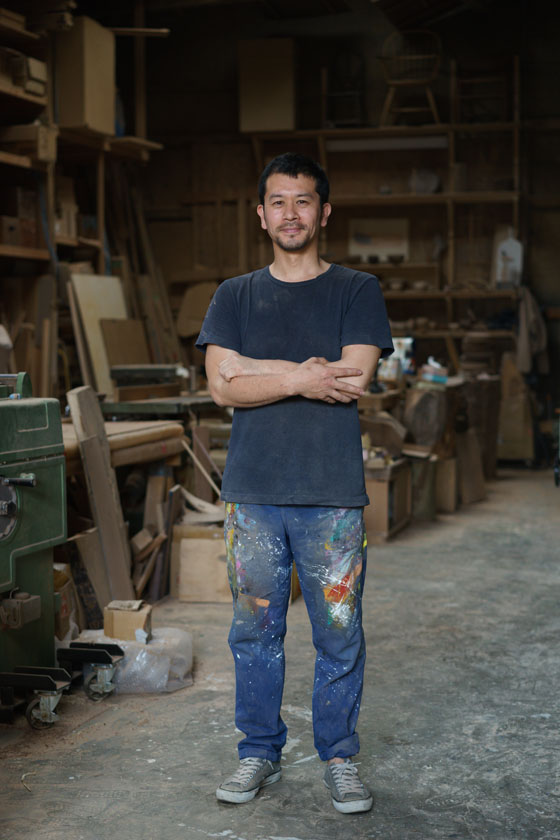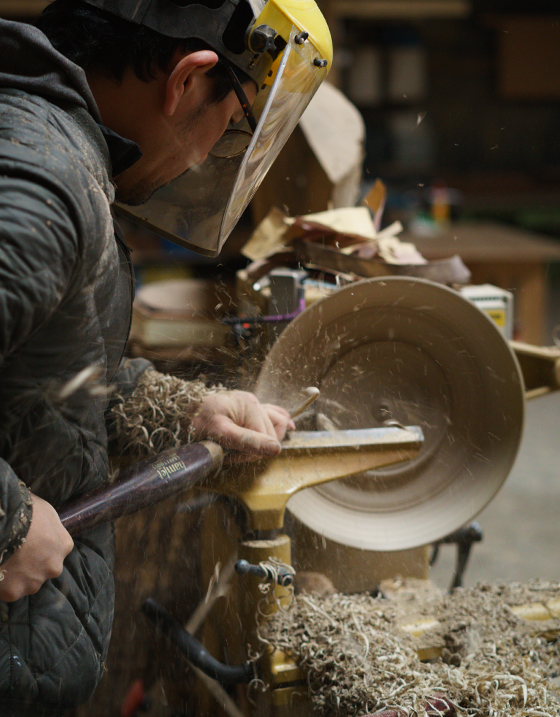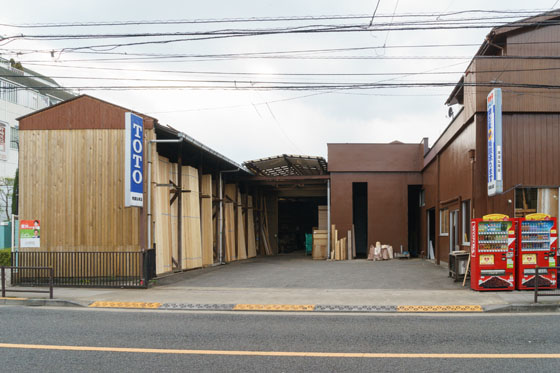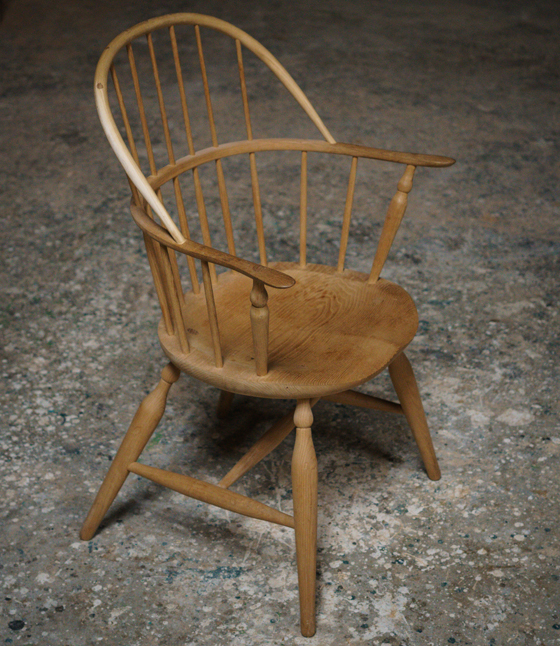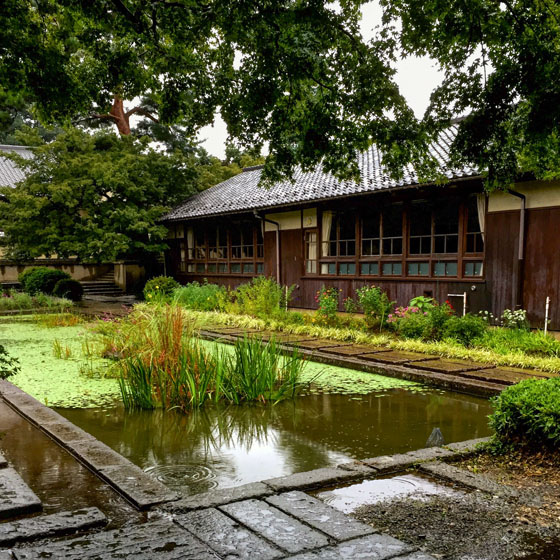Japan Stories: Kazuto Yoshikawa
Scritto da 25portraits
Berlin, Germania
03.07.17
For the second installment of Japan Stories, Kazuto Yoshikawa explains why, after a twelve-year career at Italian furniture company Cassina IXC in Japan, he chose to devote himself to the study of Japanese woodcraft and furniture design.
Kazuto Yoshikawa in his workshop in Setagaya, Tokyo
Kazuto Yoshikawa had been working for the Italian furniture company Cassina IXC in Japan for 12 years, when, in 2012, he decided to make a career change, and devote himself to the study of Japanese woodcraft and furniture making. In his studio in Tokyo, he carefully selects the appropriate material for each of his works, integrating the natural irregularities of wood grain into a range of products from tableware to furniture.
Kazuto Yoshikawa talks about his former career and wood as a material.
How did you discover woodworking as a profession?
I grew up in the countryside of Fukushima. There was a grove just behind my house and I used to go there and play with the trees. I liked making things with my hands so it was natural for me to play with branches and wooden blocks in the grove. I made bows, swords, spoons, toys and even a small shed. So the profession I do now is just a continuation from the time of my childhood.
Turning a new bowl from the wood of a friend’s tree (top). Oak bowls turned from a freshly cut log (bottom)
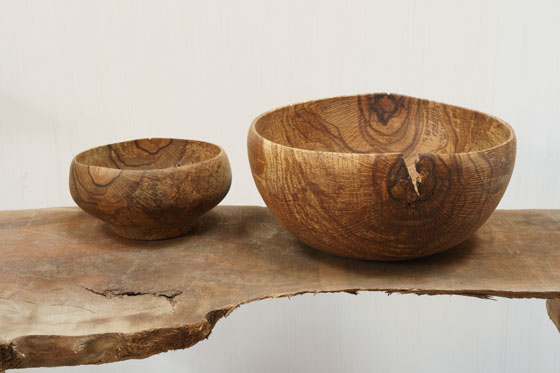
Turning a new bowl from the wood of a friend’s tree (top). Oak bowls turned from a freshly cut log (bottom)
×What did you do for Cassina in Japan?
I was working for Cassina in Japan as a sales person for eight years and four years as a merchandiser. Working with professional designers and seeing thousands of well-designed products at the fairs was a very good experience for me.
After the catastrophes in 2011 did you start to think about changing your career?
The Tōhoku earthquake in 2011 was one of the most important reasons for the change of my career. That huge disaster reminds me deeply that people only live once.
I was 35 years old and had two kids at that time. I had been feeling enough of the high-end furniture business because I had been working for over 10 years at the same company. I wanted to start a new career, which could satisfy my original childhood desire: to make things with my hands.
I also wanted to show my sons that they had options in life. My profession is totally independent, while my wife is working for a large global company. So they can see those two options. I want them to try to live in whichever way they like.
The workshop is shared with a woodworking company in Setagaya, Tokyo (top). Large shelf with some of Kazuto's works on the back wall (bottom)
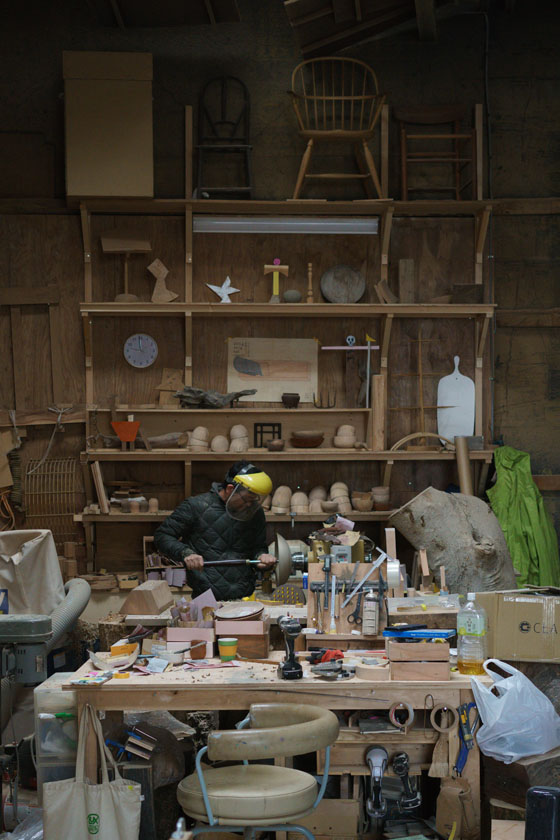
The workshop is shared with a woodworking company in Setagaya, Tokyo (top). Large shelf with some of Kazuto's works on the back wall (bottom)
×Are there certain craftsmen, designers or artists who have an influence on your beautiful works?
I like Charlotte Perriand. She is one of the giants of modern design, but she has always had a respect for natural materials and for the culture of local traditional crafts. I also like funny and playful designs, like the toys of Joaquín Torres García, and the toy-like sculptures of Picasso always inspire me.
I also like the modern painters especially Francis Bacon, Jackson Pollock, Willem de Kooning, who sometimes used accidental, unintended and/or unconscious ways in their painting. They tell me that unconsciousness often surpasses consciousness.
How do you see yourself, as a woodworking craftsman or more like a craftsperson for wooden artworks?
I think I am in-between. But I prefer to do my work without a particular schedule, especially for works that need more impressive grains or interesting leftovers. All I can do is just wait for a chance encounter.
How do you use wood as material?
I like wood which is not plain and clean. I like using more rustic wood with irregular grains because it reminds me that the wood once had a life as a tree. Wood is different from ceramic and iron. It is a biotic material. The factors that I cannot control, like irregular grains, sometimes give my works a sense of being alive.
Windsor chair (top). Bowl, plate, cups, boxes, spoons, brooches, and knives for wagashi (Japanese sweets) made of several woods (middle). Preparing a cutting board for oil-impregnation (bottom)
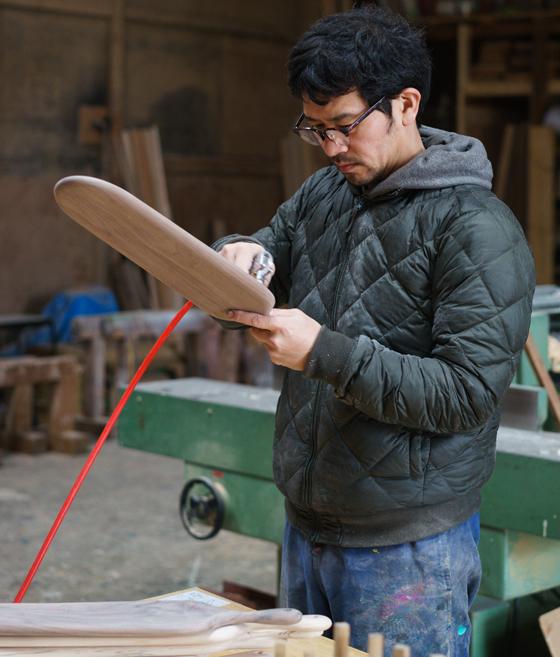
Windsor chair (top). Bowl, plate, cups, boxes, spoons, brooches, and knives for wagashi (Japanese sweets) made of several woods (middle). Preparing a cutting board for oil-impregnation (bottom)
×You told us you use wood not only from wood markets but also from trees that were cut here in Tokyo.
I think trees and wood exist very close to daily life, even in the city. If you do not have a garden, you can see and touch the trees and flowers in the street or in a park. So it is very natural for me to use those trees in the city just because they exist nearby and I can get them easily. Concerning the toys that are made from the leftovers, I am not conscious of recycling. I use them because their unintentional shapes inspire me a lot.
You also work on an interesting school project here in Tokyo.
Now I am working on a project for a school furniture replacement. The school, Jiyu Gakuen, is located in the suburb of Tokyo. It has a very unique curriculum that emphasizes practical and basic experiences in daily life. They cultivate their own fields on campus and harvest vegetables for their meals.
Frank Lloyd Wright and his student Arata Endo designed the school’s beautiful buildings. There are about 4,000 trees on the campus, which is 100,000 m2, and they also have a woodworking studio for the students.
My plan for the project is characterised by this point: to only use domestic wood. Especially for the tops of the desks: they can be traced to the mountain where the trees grew and were cut down. So the students can go there and see the original source of the material.
The students started planting trees on the school mountain in 1950 and we use the wood from that mountain. I like to think that knowing the original source of materials leads to a deeper and more essential understanding of things.
What kinds of plans or dreams do you have for the next years?
I want to attend an exhibition abroad, if I have the chance. I want to communicate with people worldwide through my works and share the sense of values that I feel.
The world is getting smaller in the sense of information – especially visual images that can communicate easily beyond language. I feel people in the world are getting fed up with industrially mass-produced things, which are made just in terms of competitive pricing. I know that they enrich our life in terms of convenience, but they cannot enrich enough of our lives essentially. The things made by hand retain the feeling of one’s heart because the hands are directly connected to the heart (…).
Tokyo-based school, Jiyu Gakuen, where Kazuto Yoshikawa will work on renewing the students’ desks and chairs. Photo by Kazuto Yoshikawa (top). Animals and an angel made from wood leftovers (bottom)
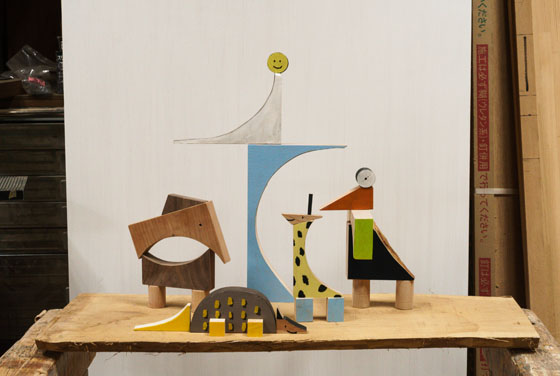
Tokyo-based school, Jiyu Gakuen, where Kazuto Yoshikawa will work on renewing the students’ desks and chairs. Photo by Kazuto Yoshikawa (top). Animals and an angel made from wood leftovers (bottom)
×This is an excerpt of the interview with Kazuto Yoshikawa held in May 2017 in Setagaya, Tokyo.
Photos: Katharina Zettl and Uwe Roettgen
...
About 25portraits
25portraits is a book and documentary project about the inspiring workshops, materials, production processes, products and personalities of 25 craftspeople from all fields of Japanese arts and crafts.

